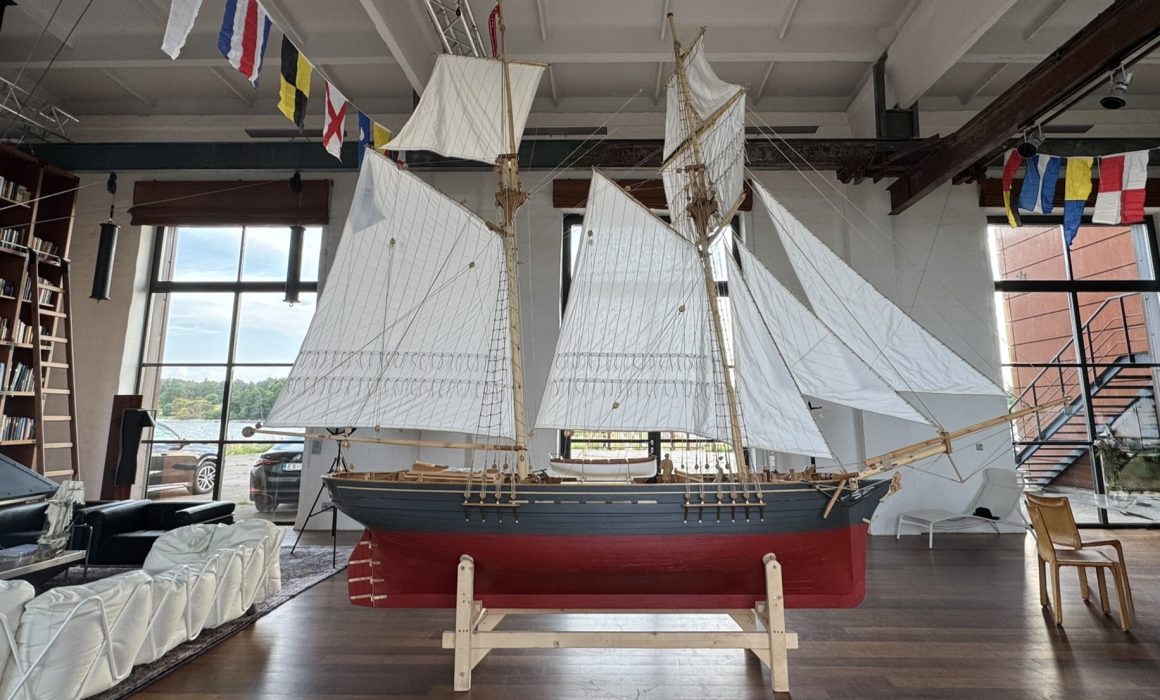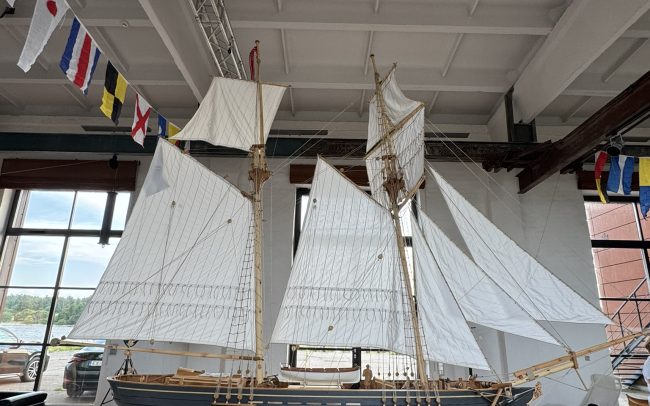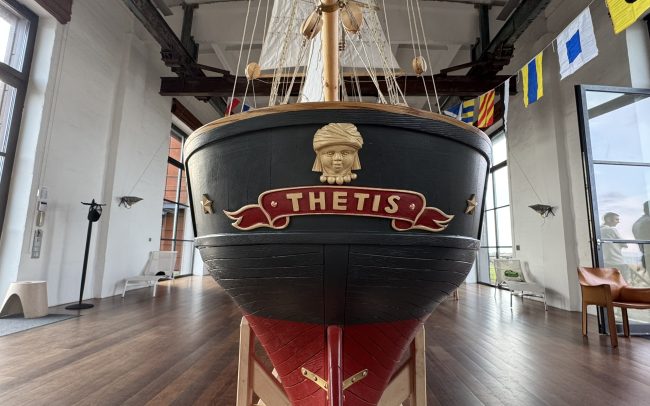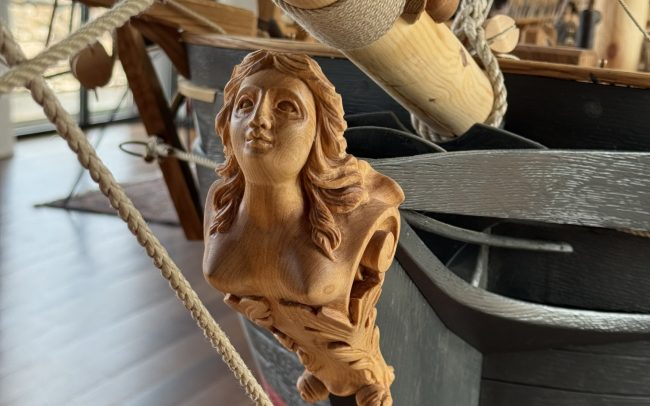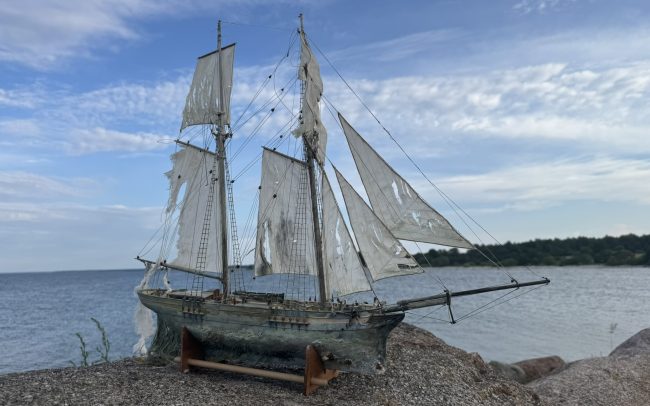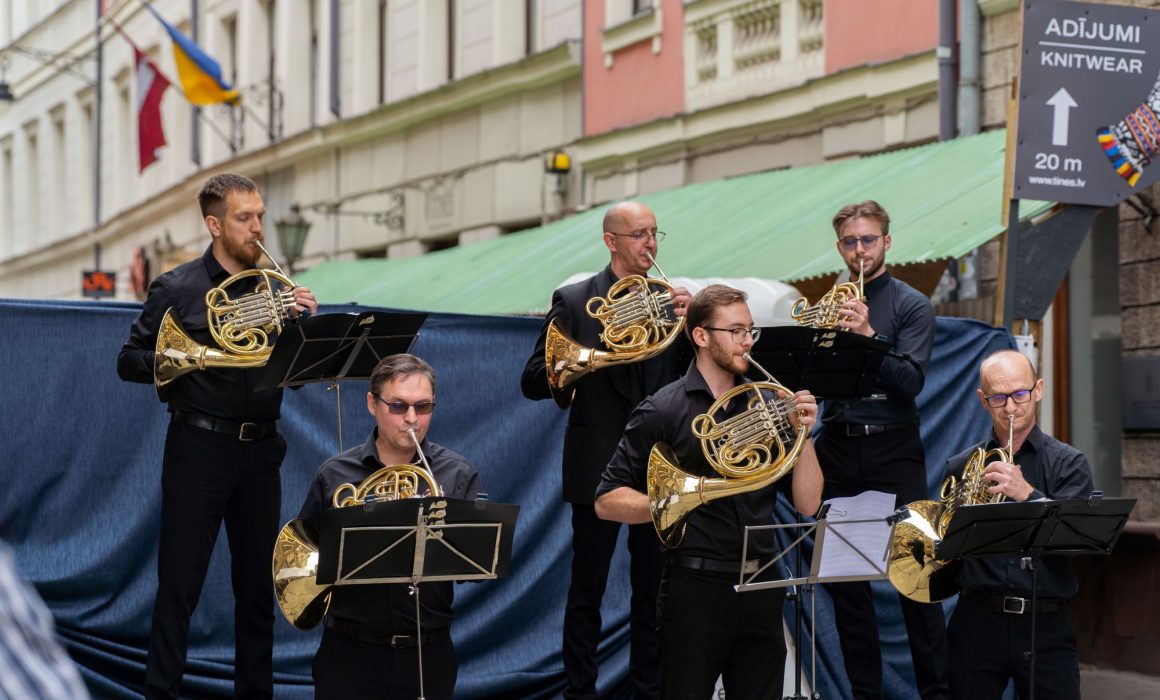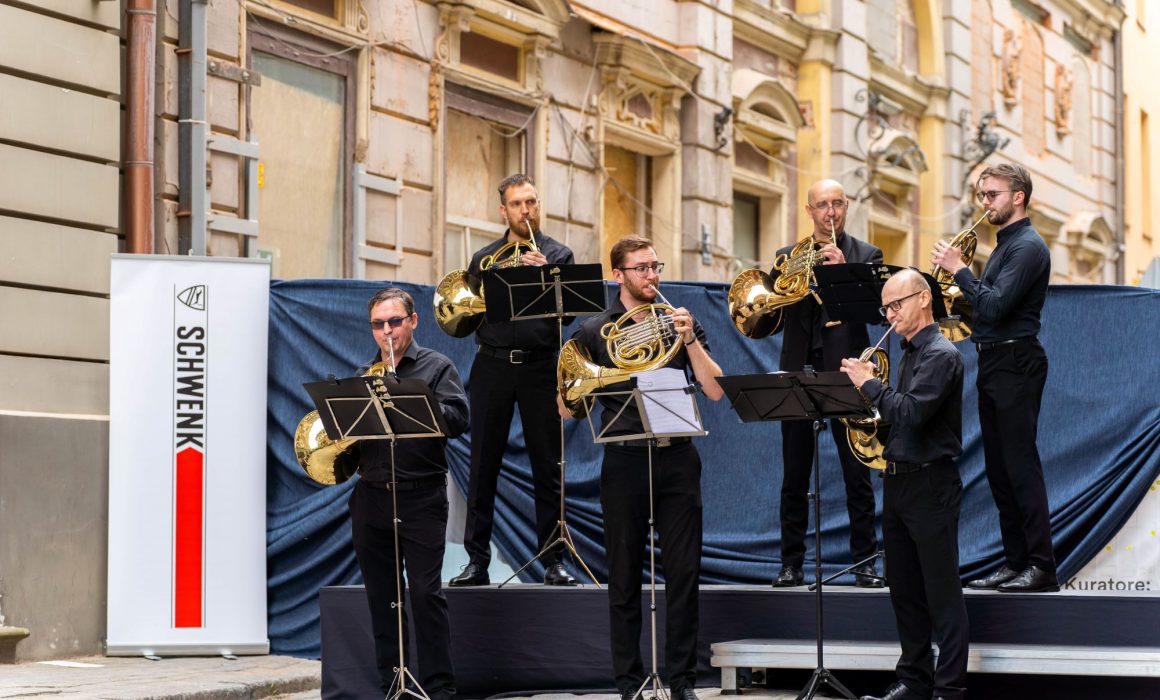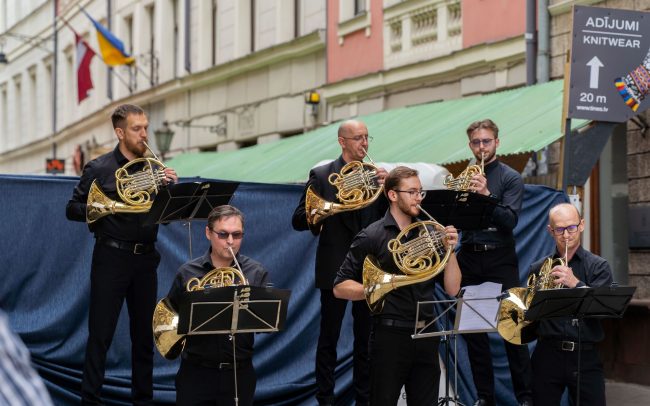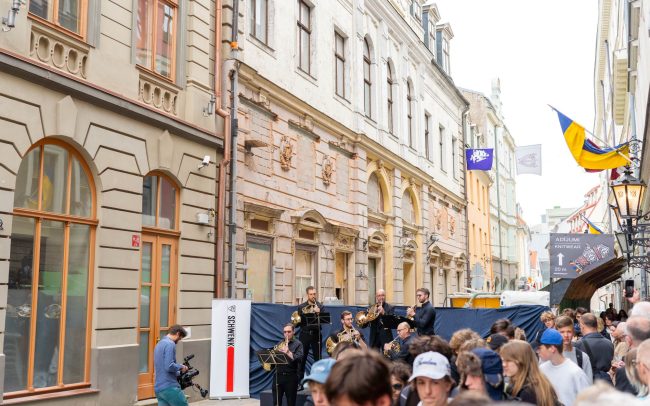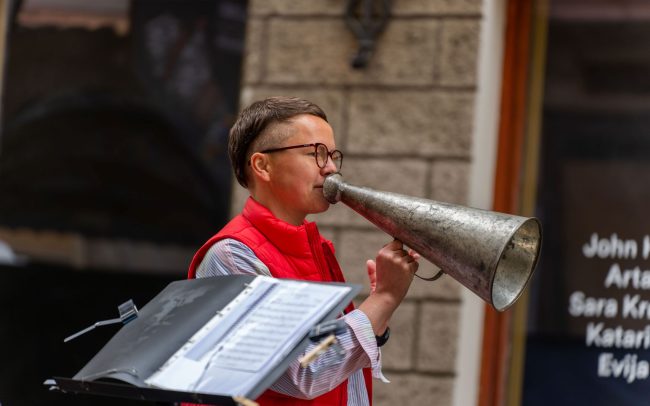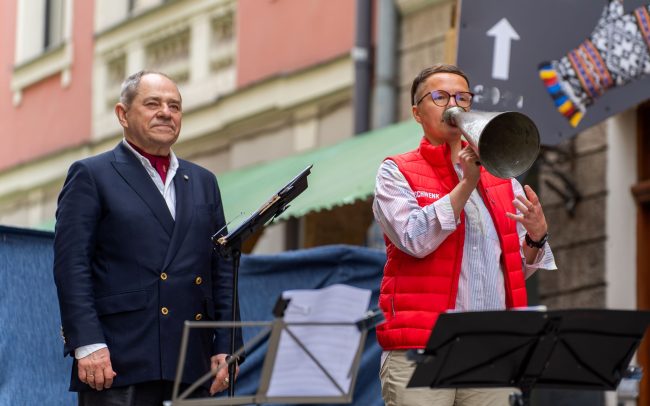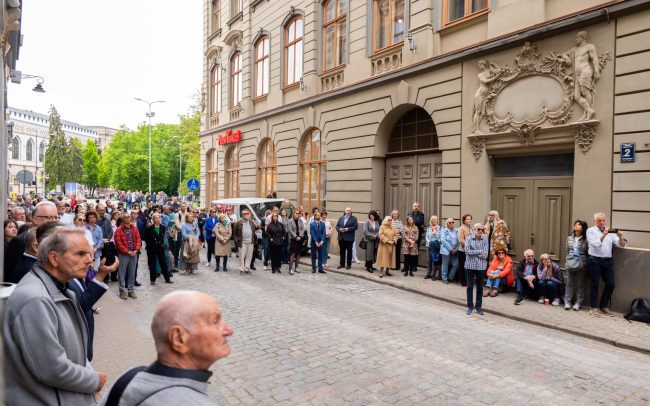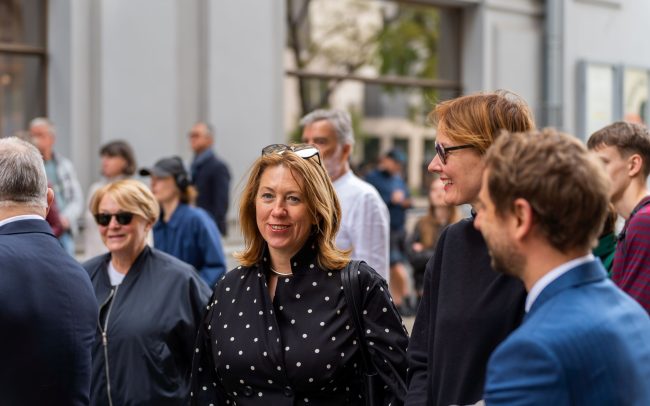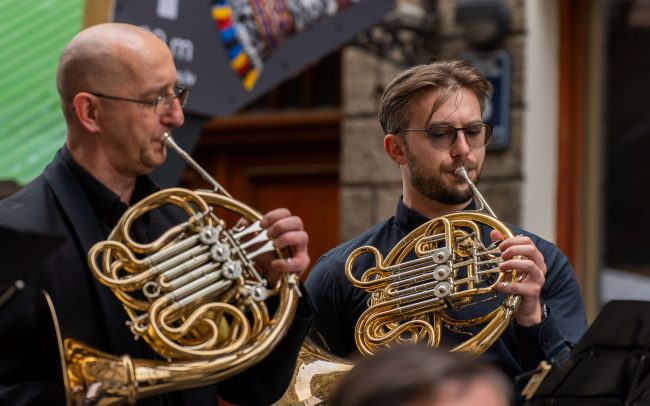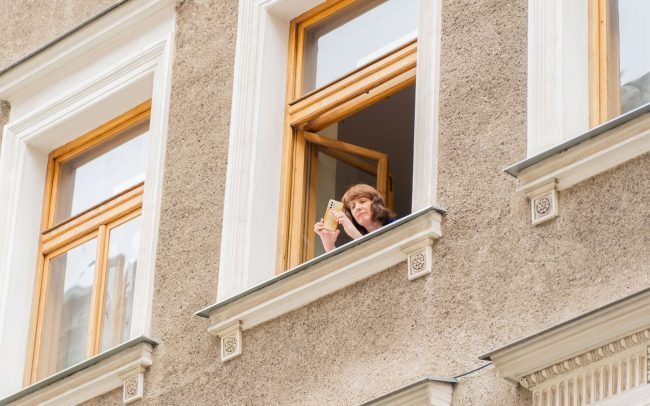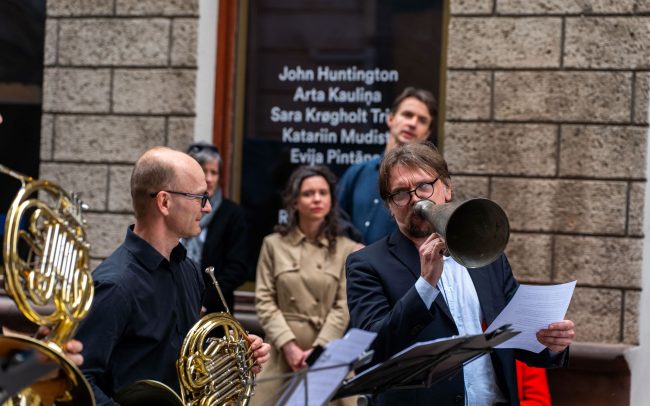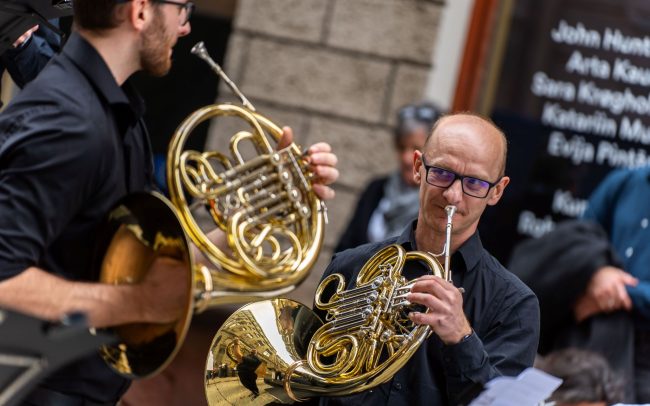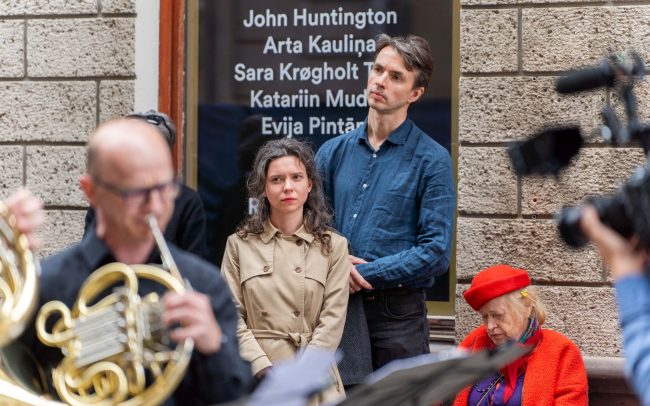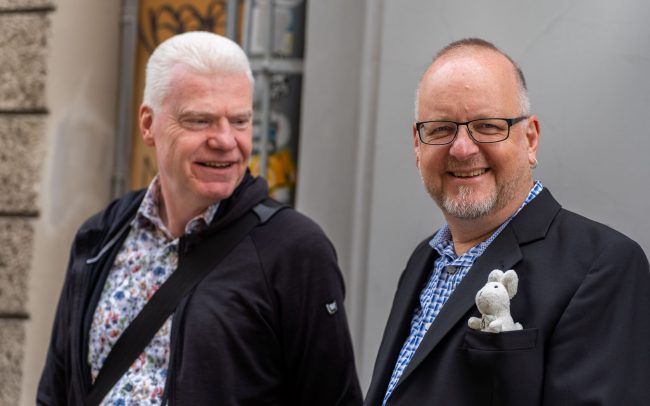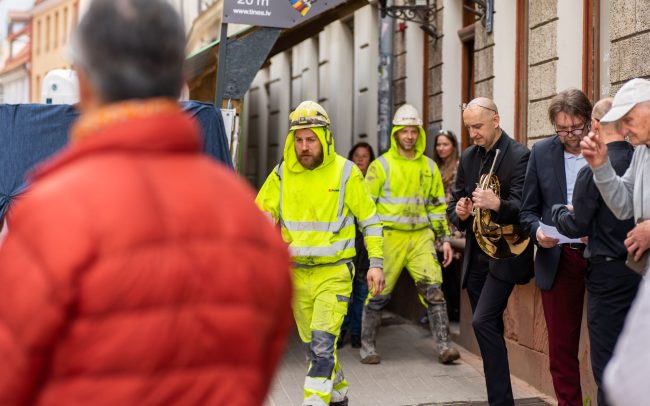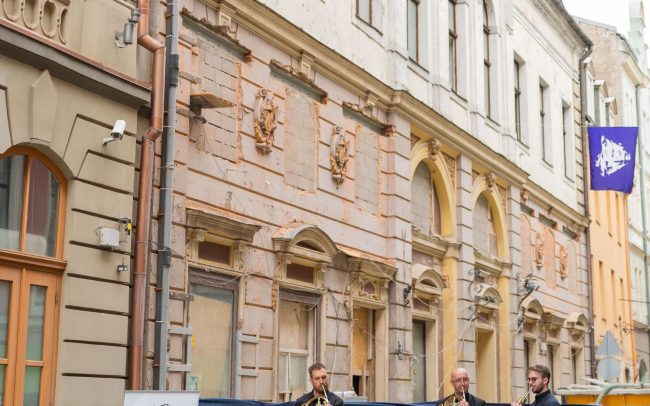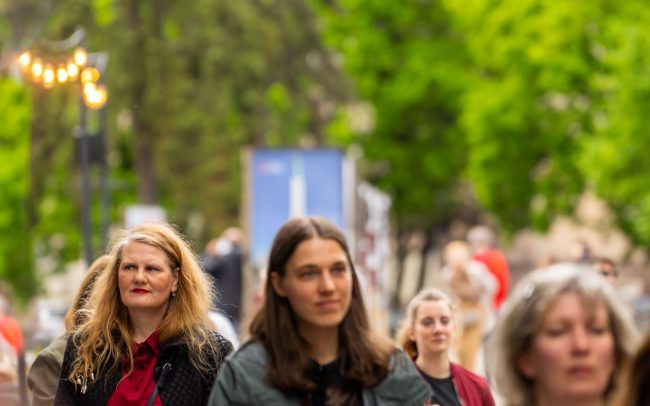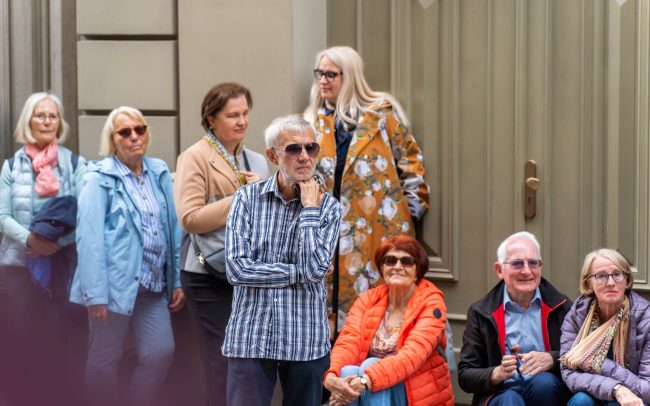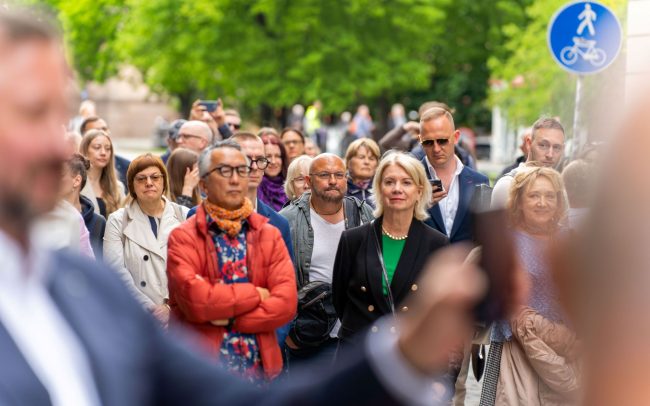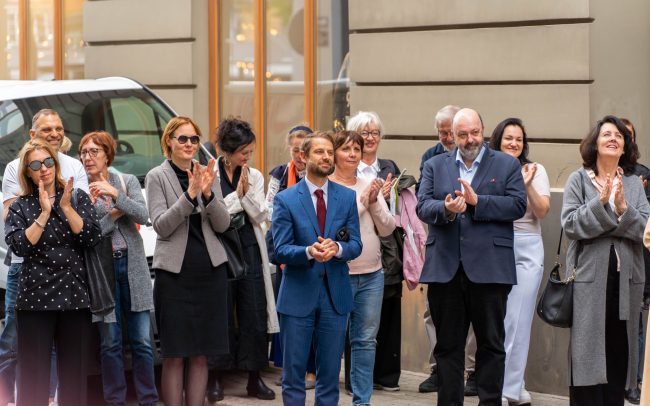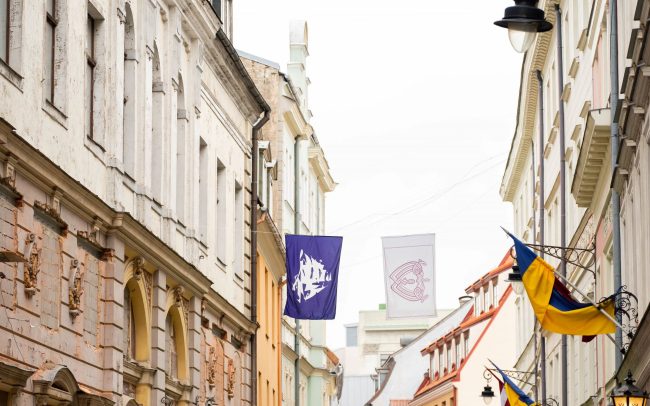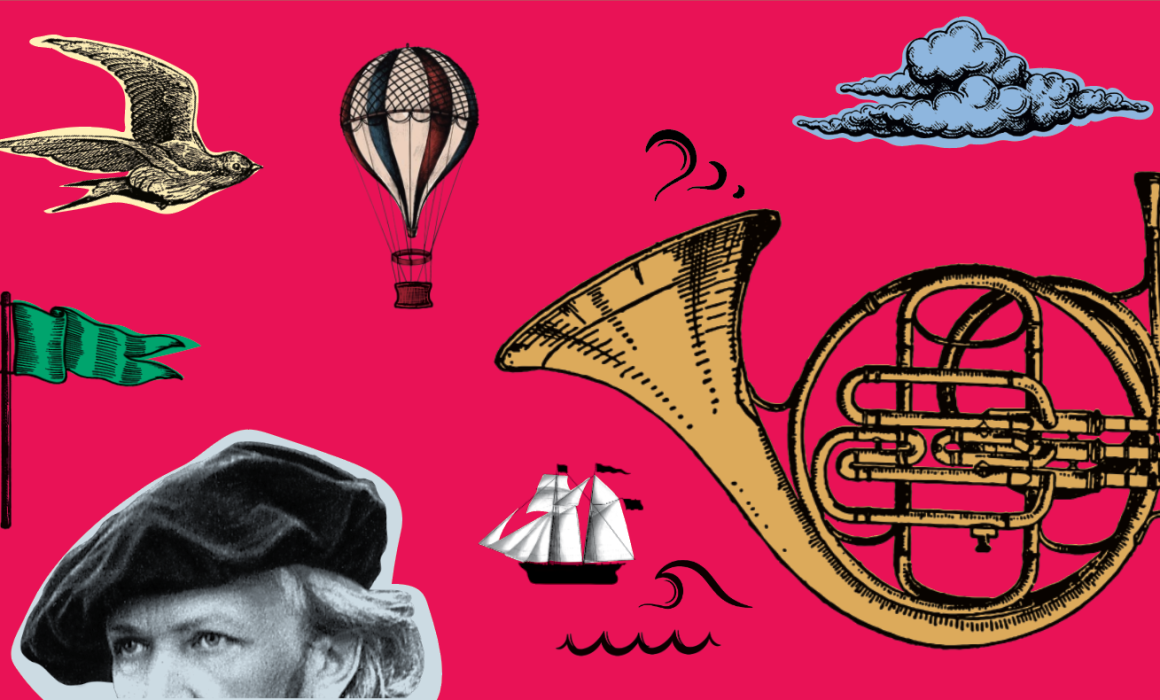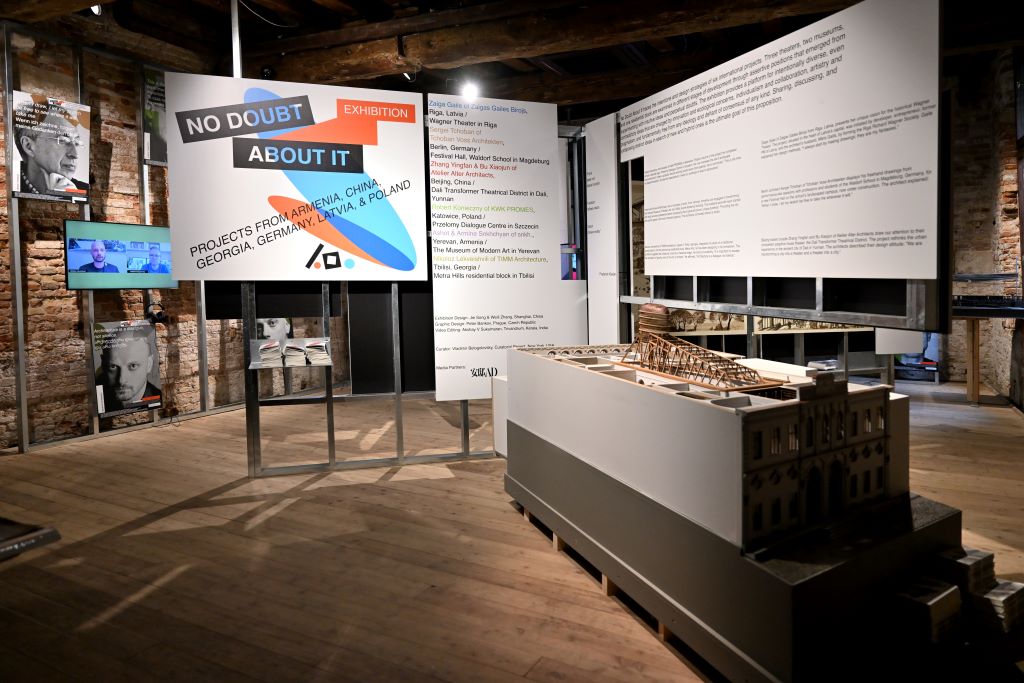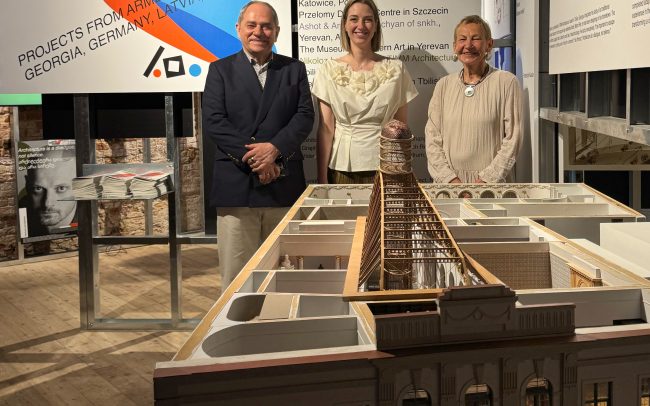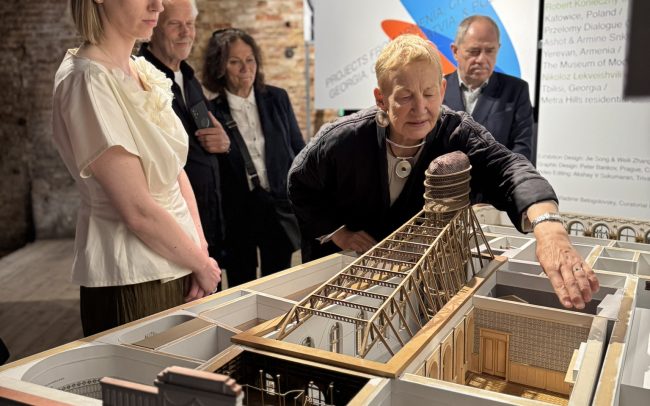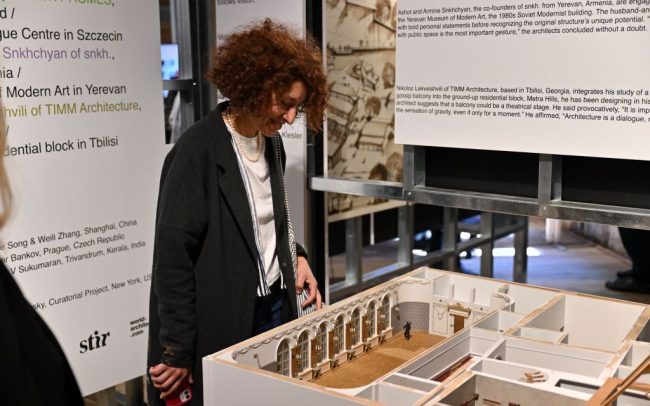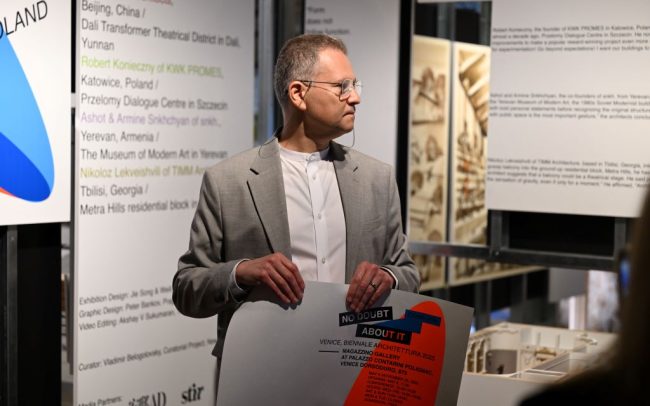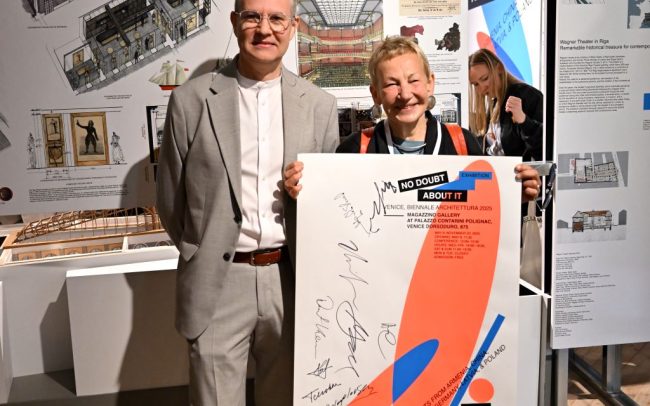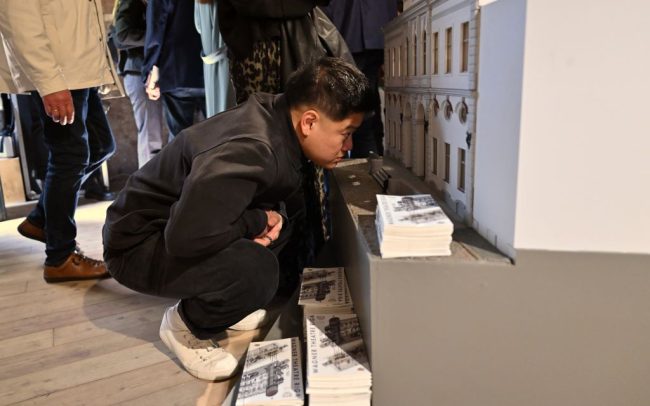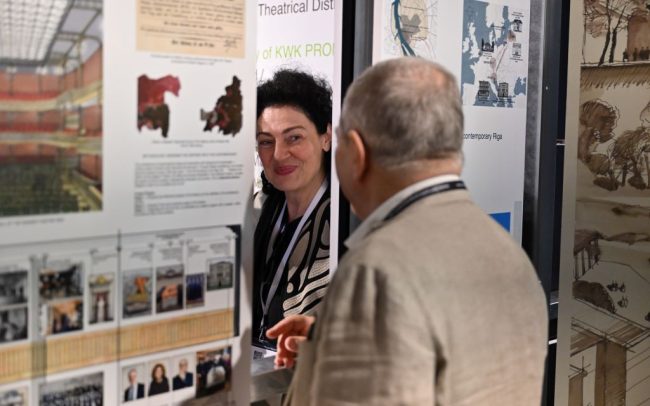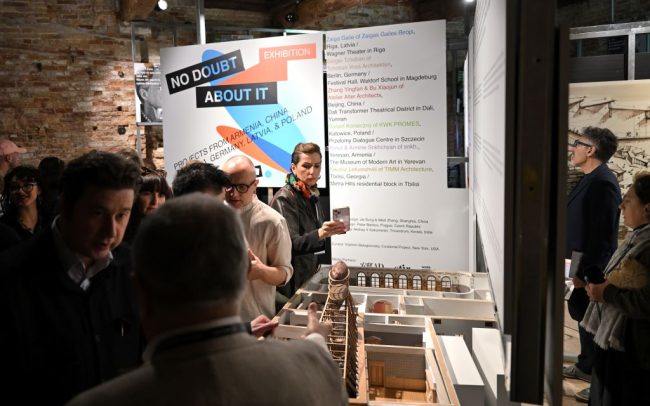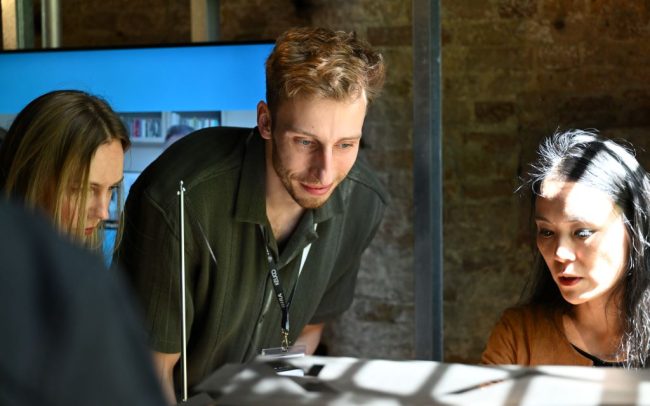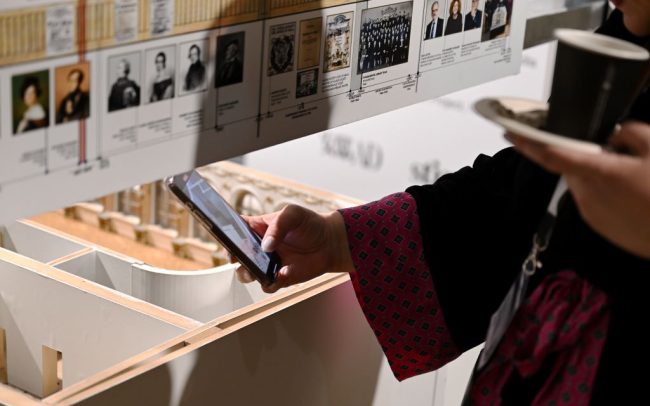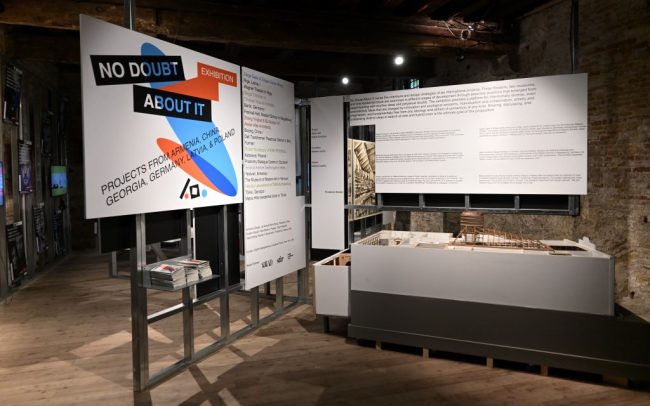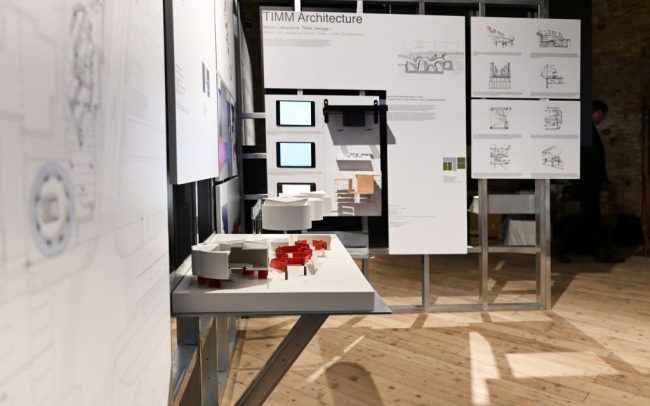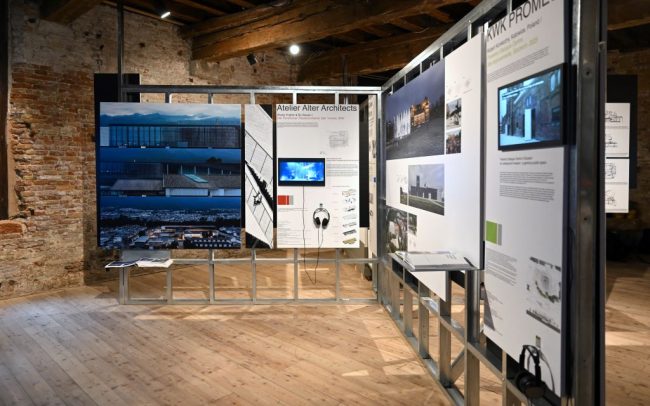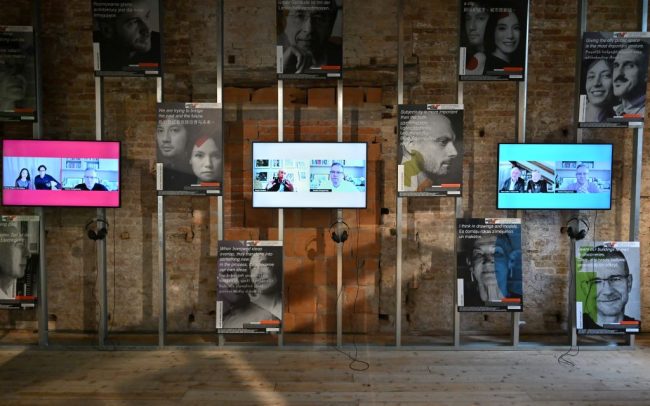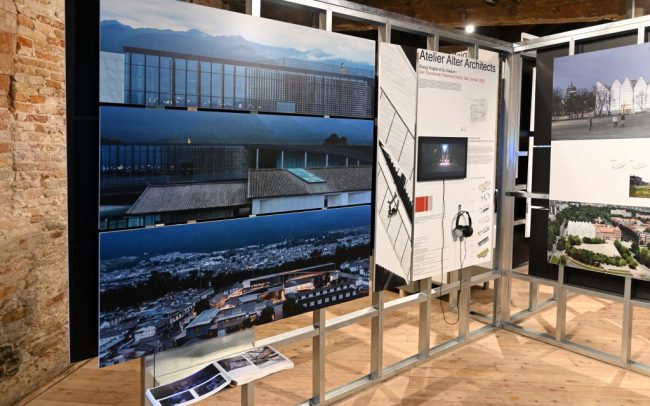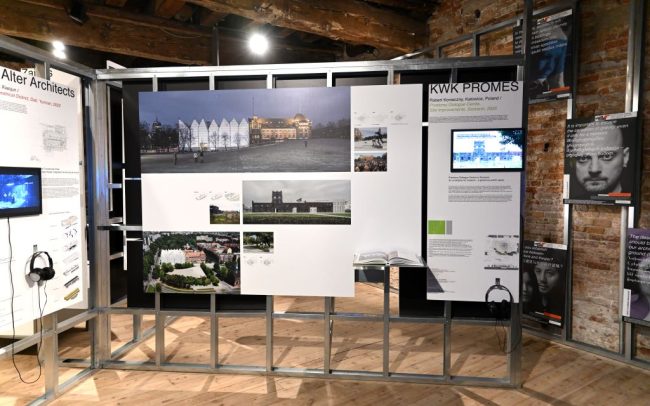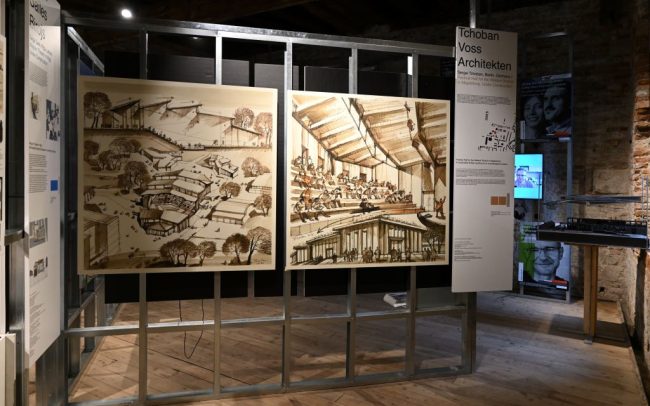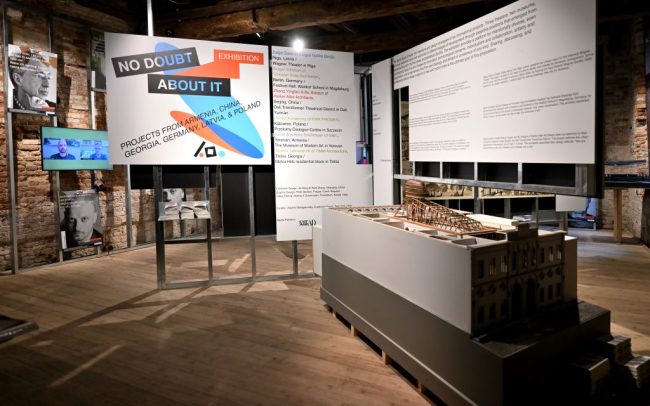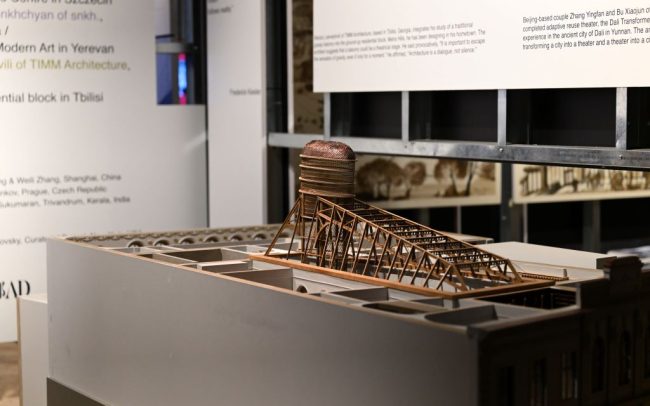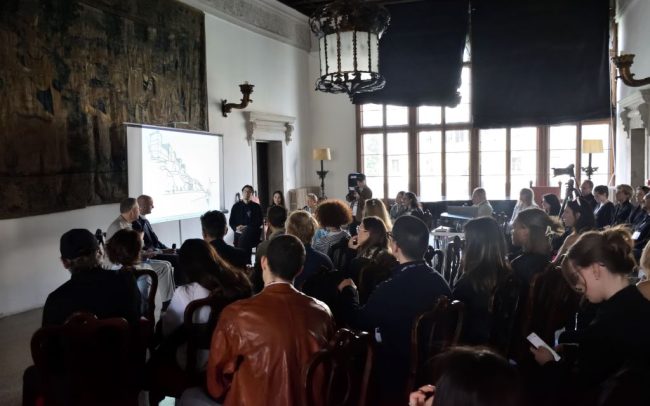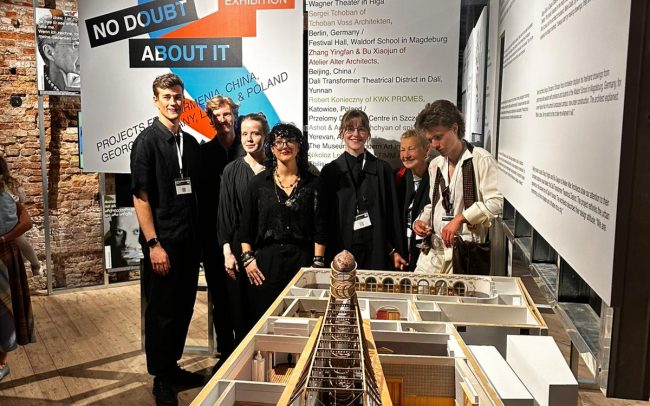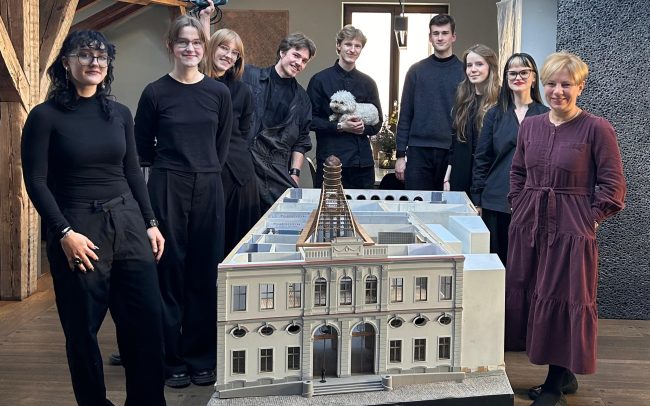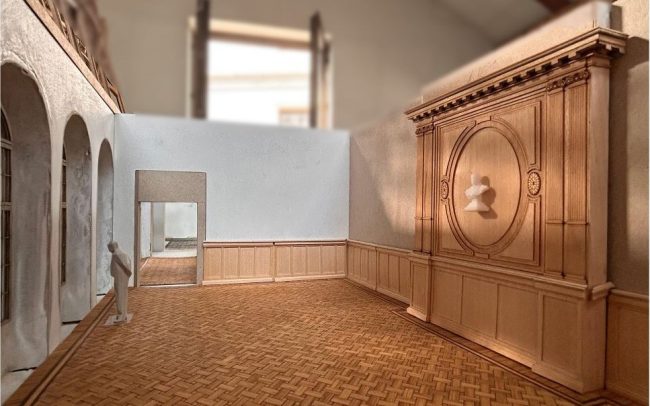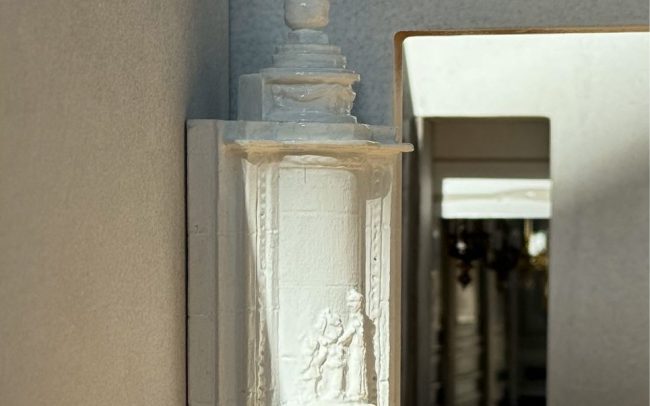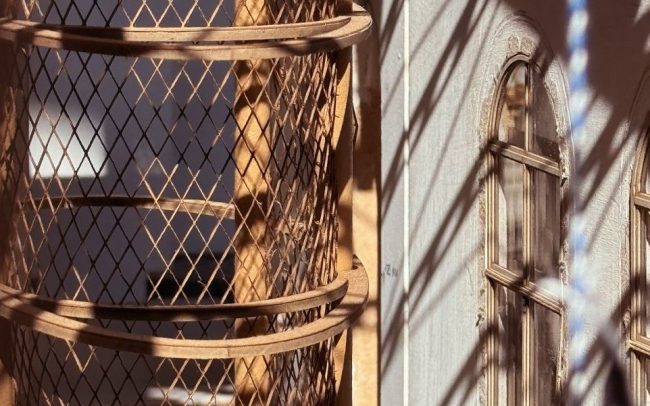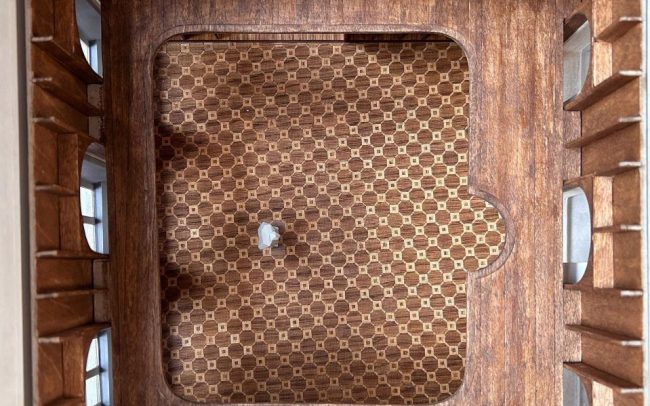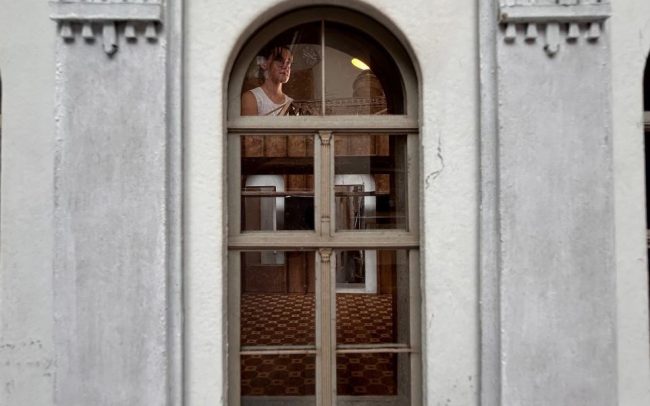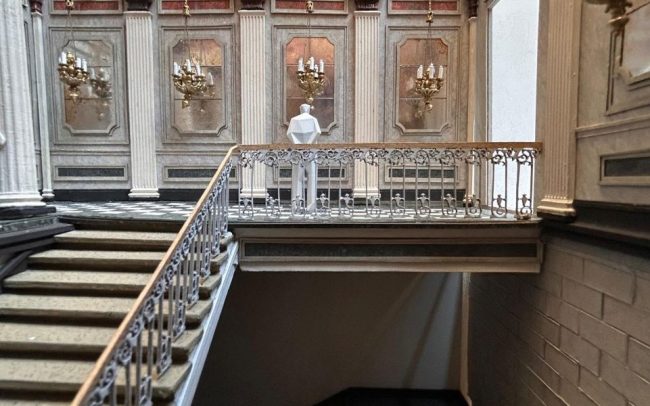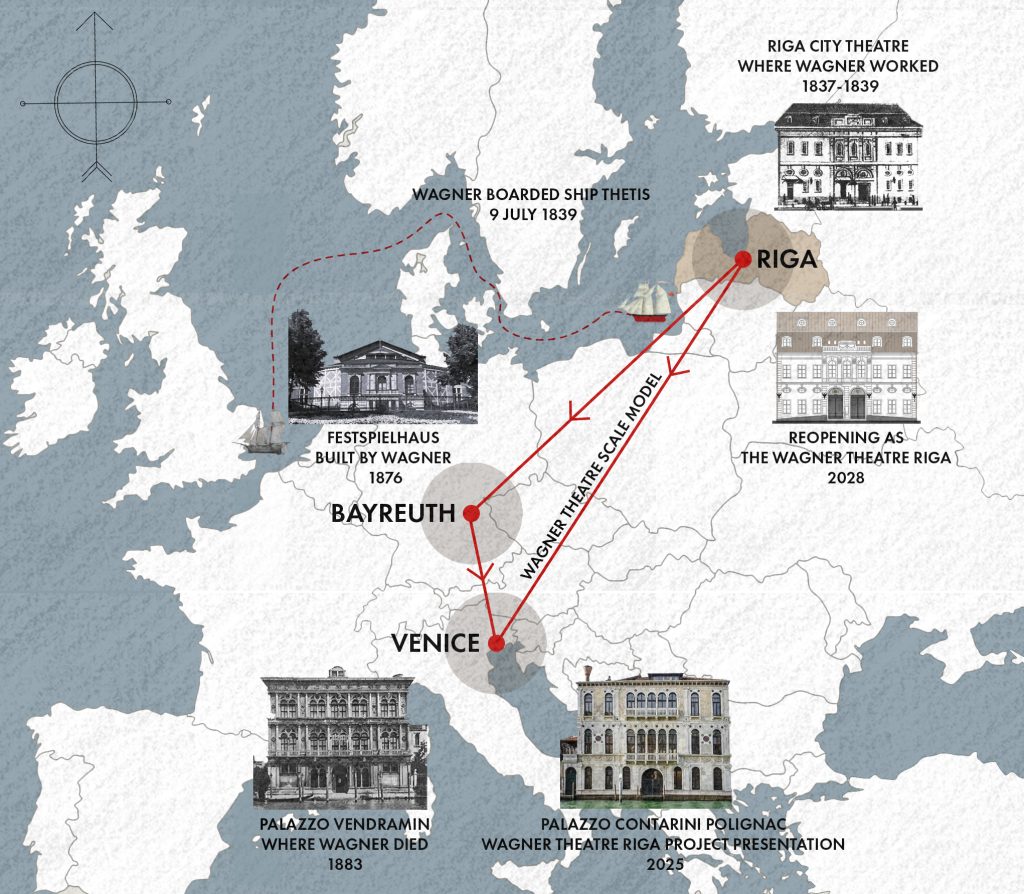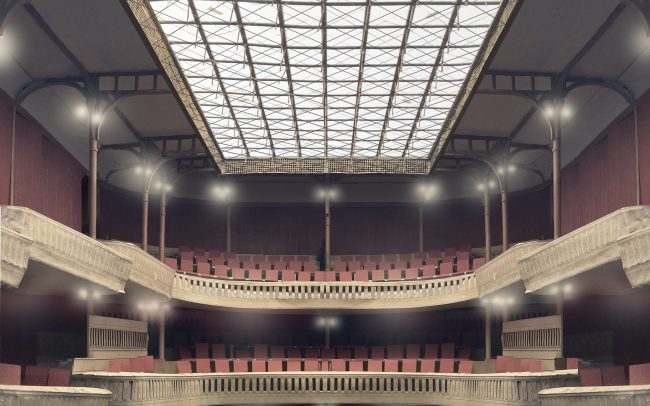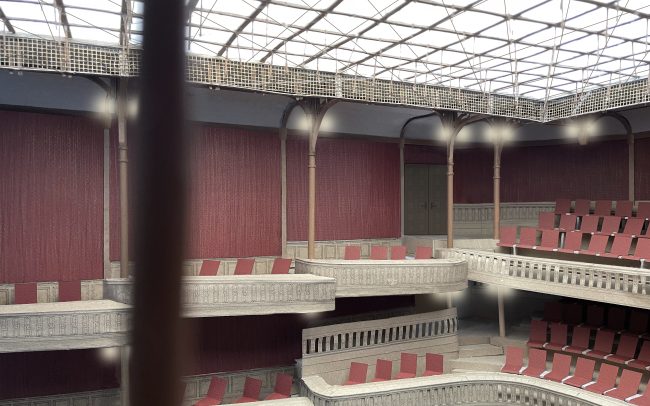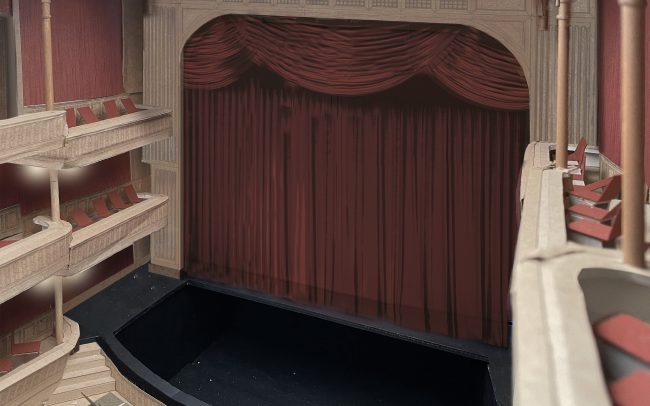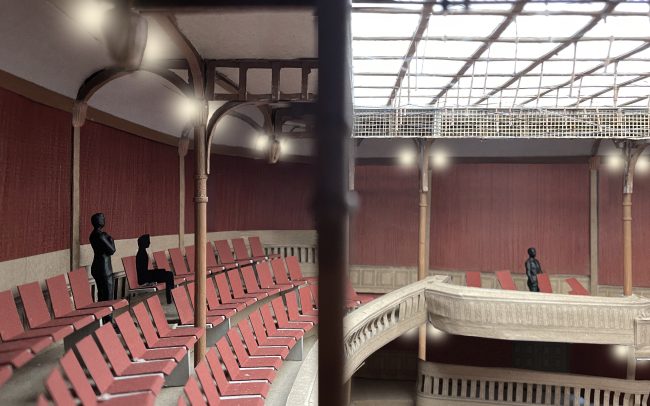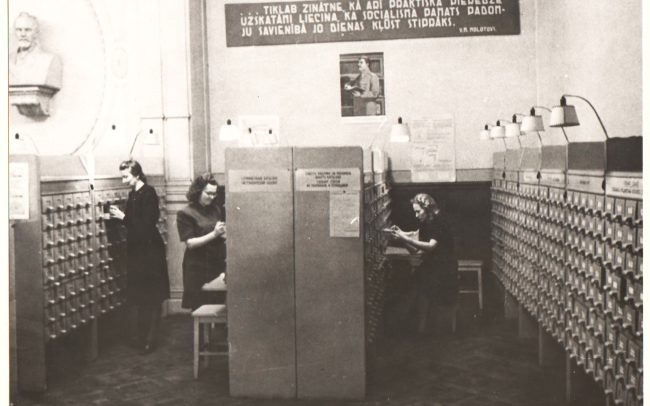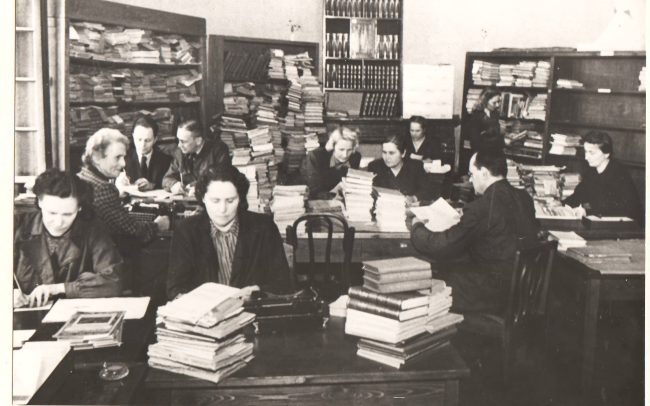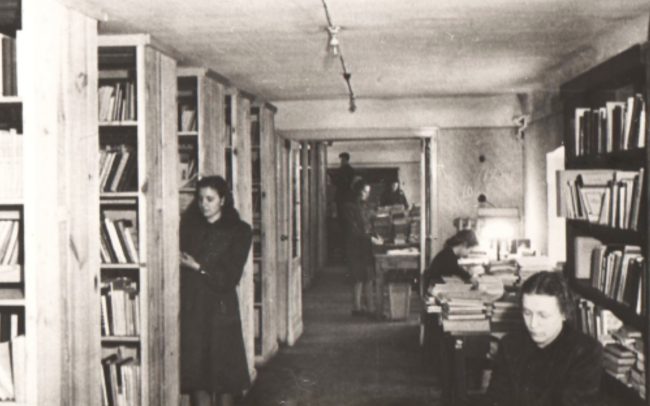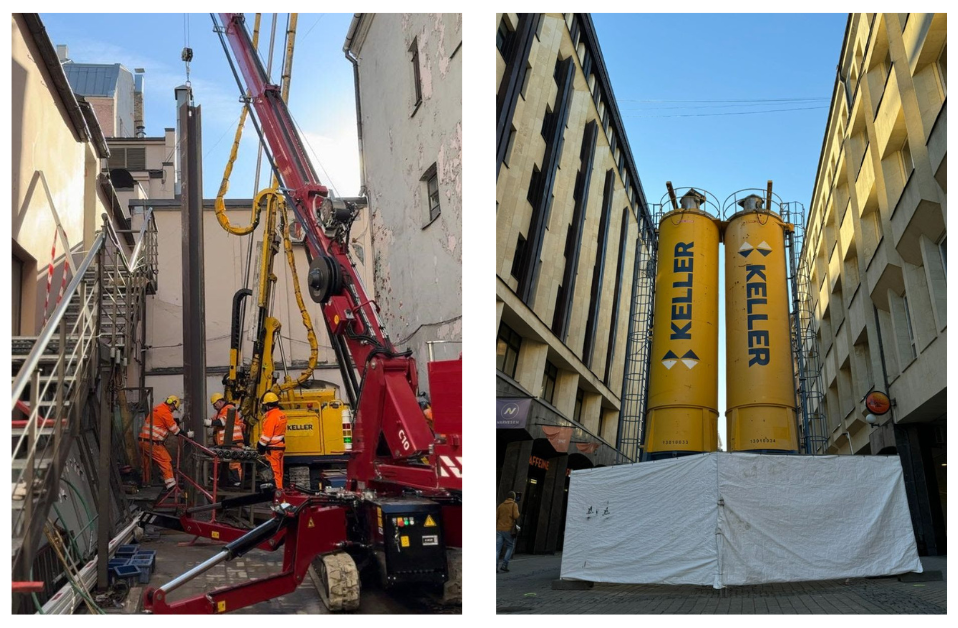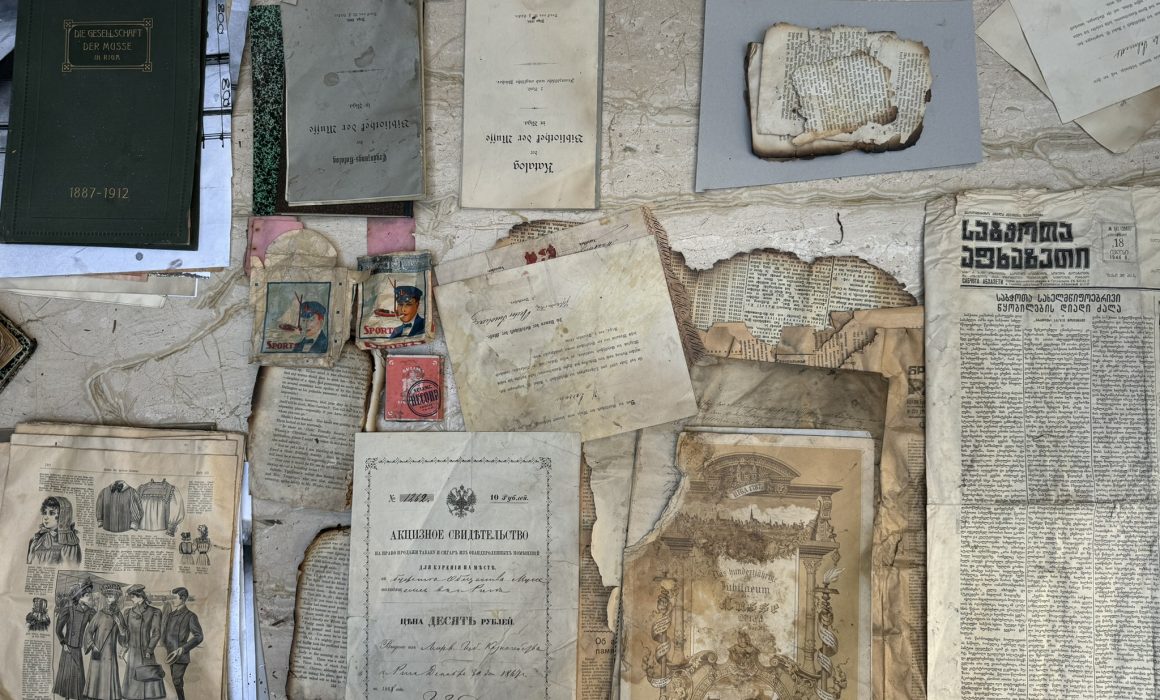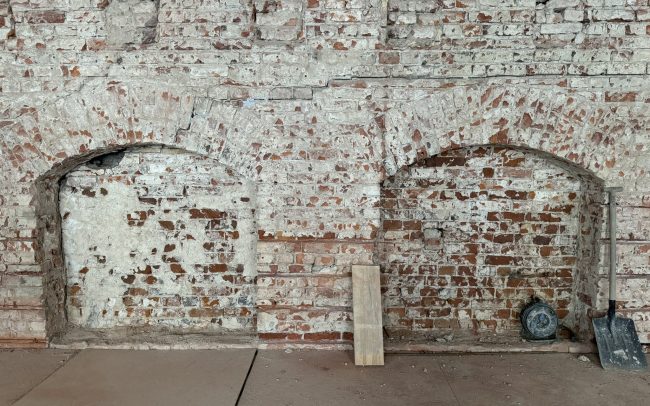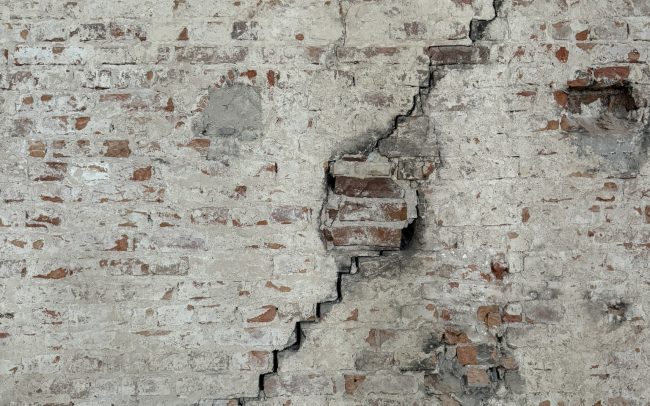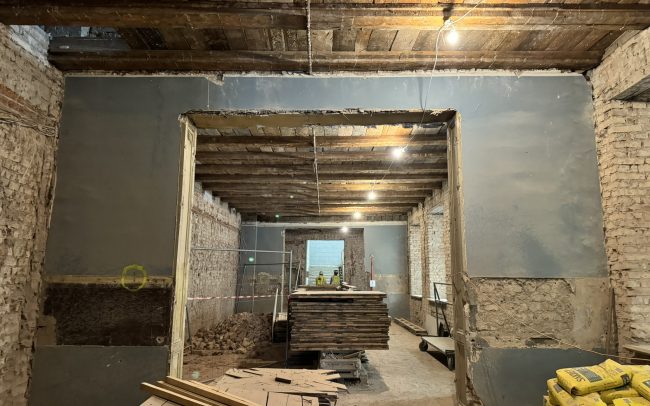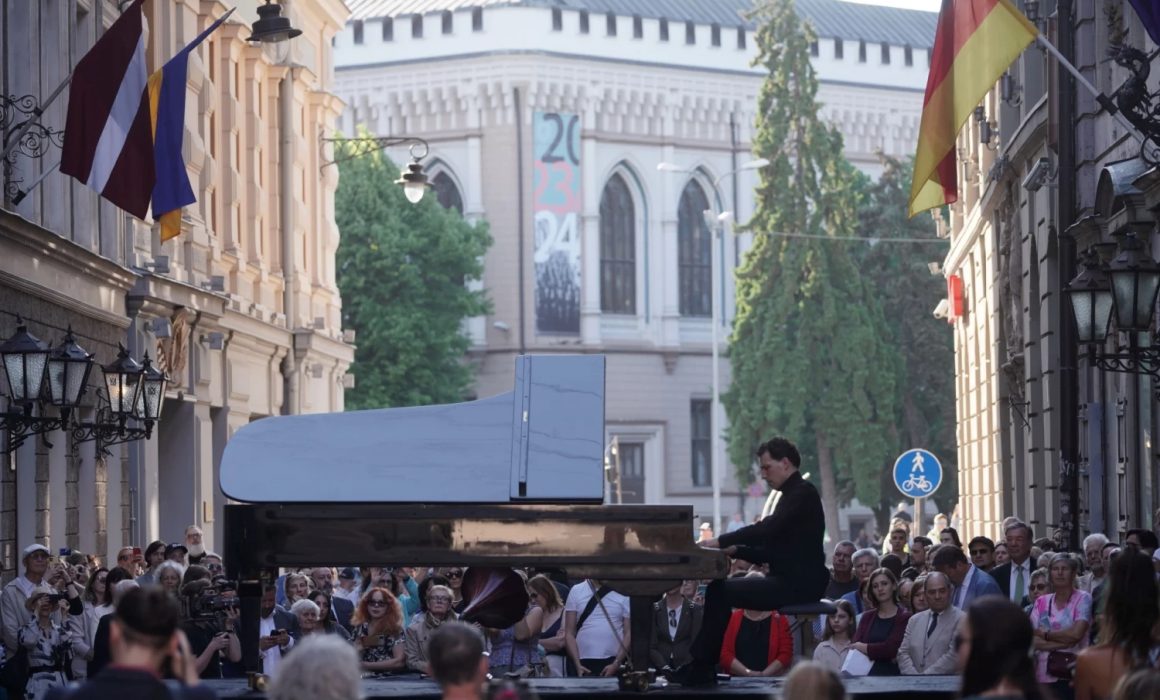The First Exhibit of the Riga Wagner Museum Christened – the Schooner Thetis
For nearly two years now, the sound of construction has echoed through Old Riga, as the reconstruction of the Wagner House continues. Alongside the building works, the Riga Richard Wagner Society (RRWS) is actively planning the future of the building and its cultural life after reopening. It is already known that the house will feature the Richard Wagner Museum, and in July, the museum’s first exhibit was christened – a meticulously crafted model of the ship Thetis.
In the story of the famous German composer Richard Wagner’s connection to Riga and the two years he spent here as the City Theatre’s music director, his departure is just as significant as his stay. Fleeing from creditors and debt, Wagner, along with his wife Minna and their Newfoundland dog Robber, escaped under cover of darkness to the port of Pillau to sail for London. A terrifying storm raged during the voyage, and the fear of death – combined with a sailor’s legend he heard on board – inspired Wagner to write the opera The Flying Dutchman. Because of this story, the RRWS chose a torn-sailed sailing ship as its emblem. The ship Wagner fled on was called Thetis, named after the sea goddess. While it was a common ship name at the time, through research and the Lloyd’s Register of Ships, the exact vessel was identified, and it was decided that the schooner Thetis would become part of the Wagner Museum.
The first scale model (1:50) of the ship was made in 2023 by Aleksandrs Šarga. It was then transformed by the scenographic collective Grāfienes into a wrecked sailing ship battered by storm, in the spirit of The Flying Dutchman. Now, just two years later, a new, larger model has been completed at a scale of 1:6 – it is three and a half meters long and will be suspended in the glass atrium of the restored Wagner House, above visitors’ heads. Those walking through the enfilade of rooms on the third floor – known as The Muse floor – will be able to observe the ship’s deck and rigging up close.
A large team contributed to the creation of this museum exhibit. Project drawings and sketches were made by Aleksandrs Šarga, while the hull was crafted by Aigars Baiks. A successful collaboration was also established with the Riga School of Art and Media, where under the guidance of instructor Silvestrs Fēlikss Ķībers, various wooden and metal parts were produced. The ship’s figurehead – a sculpture of the goddess Thetis at the bow – was carved by woodworker Māris Liepa. Although this is a model, it replicates a real ship in detail. Even a workboat was included on the deck, crafted by Sergejs Krilovs. The sails were sewn by Zinaīda Kudrjavceva, and the grommets were made by textile artist Kristīne Ramane. Rigging installation and fabrication were handled by RRWS Chairman Māris Gailis, who also painted the ship’s hull.
The christening of the ship took place in early July, marking the anniversary of Wagner’s boarding of the Thetis on July 9, 1839. As tradition demands, a bottle of champagne was ceremoniously broken against the hull – a task performed by the chief architect of the Wagner House restoration project, Zaiga Gaile. Currently, the Thetis is located in Kaltene. As the Wagner House opening approaches, the Grāfienes scenography team will visually transform the model into the wreck of the Flying Dutchman, just as they did with the original 1:50 model.
—
The restoration of the Wagner Theatre will result in several important benefits – not only enhancing the diversity and accessibility of cultural events for the people of Latvia, but also strengthening the image of Riga and Latvia as a cultural hub and reinforcing their historical connection to Richard Wagner, who served as Kapellmeister in this very building for two years (1837–1839). The project aims not only to renovate the building and its theater hall but also to establish masterclasses and a Richard Wagner Museum. The theatre will embody Wagner’s vision of the “GesamtkunstWerk21” – an incubator for all forms of art that will become a 21st-century-worthy international center for young artists.
The main contractor for the project is the general partnership 3A, with the chief designer being SIA Sarma un Norde Arhitekti, and engineering and construction supervision provided by SIA Būves un Būvsistēmas. Architectural and interior design is being carried out by subcontractor Zaiga Gaile’s Office. Experts from other countries have also been involved – for example, theater technology solutions are being developed by Theater Advies from the Netherlands, while acoustic consultation is provided by specialists from Nagata Acoustics, led by Yasuhisa Toyota, who has contributed to the design of the Elbphilharmonie in Hamburg and the Philharmonie de Paris, among many other prominent projects.
The project “Reduction of Greenhouse Gas Emissions at the Riga Wagner Theatre, Riharda Vāgnera iela 4, Riga, LV-1050, through Restoration and Renovation” is supported by the Emission Allowance Auction Instrument, the German Federal Foreign Office, the German Embassy in Riga, the Riga City Council, the Messerschmitt Foundation, and SCHWENK.



